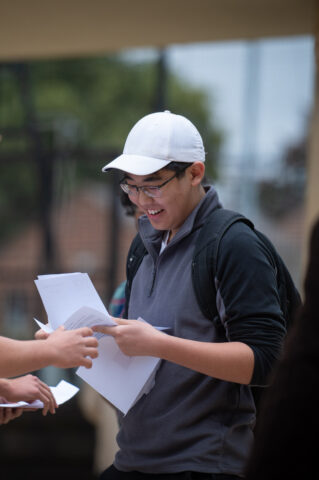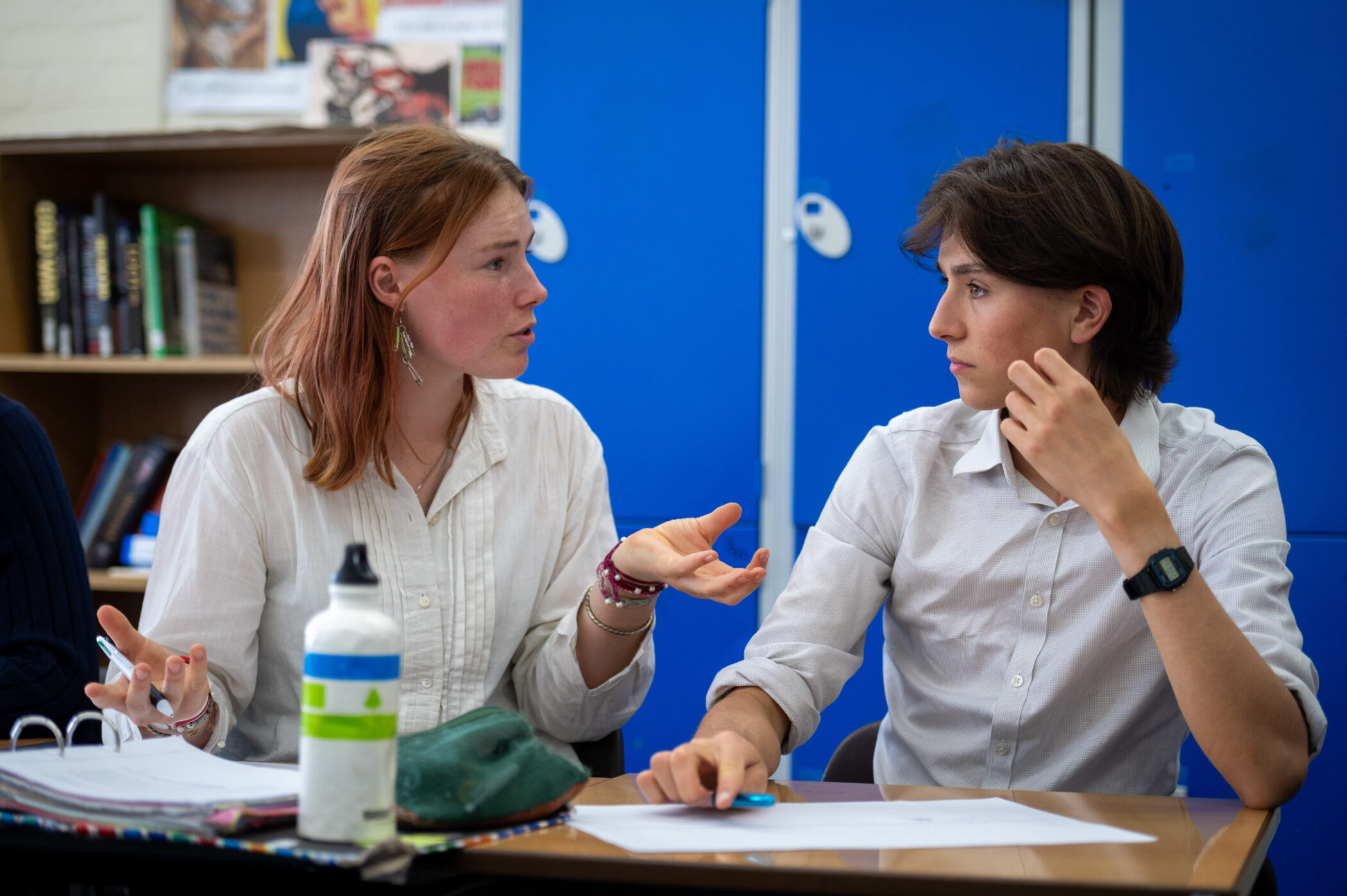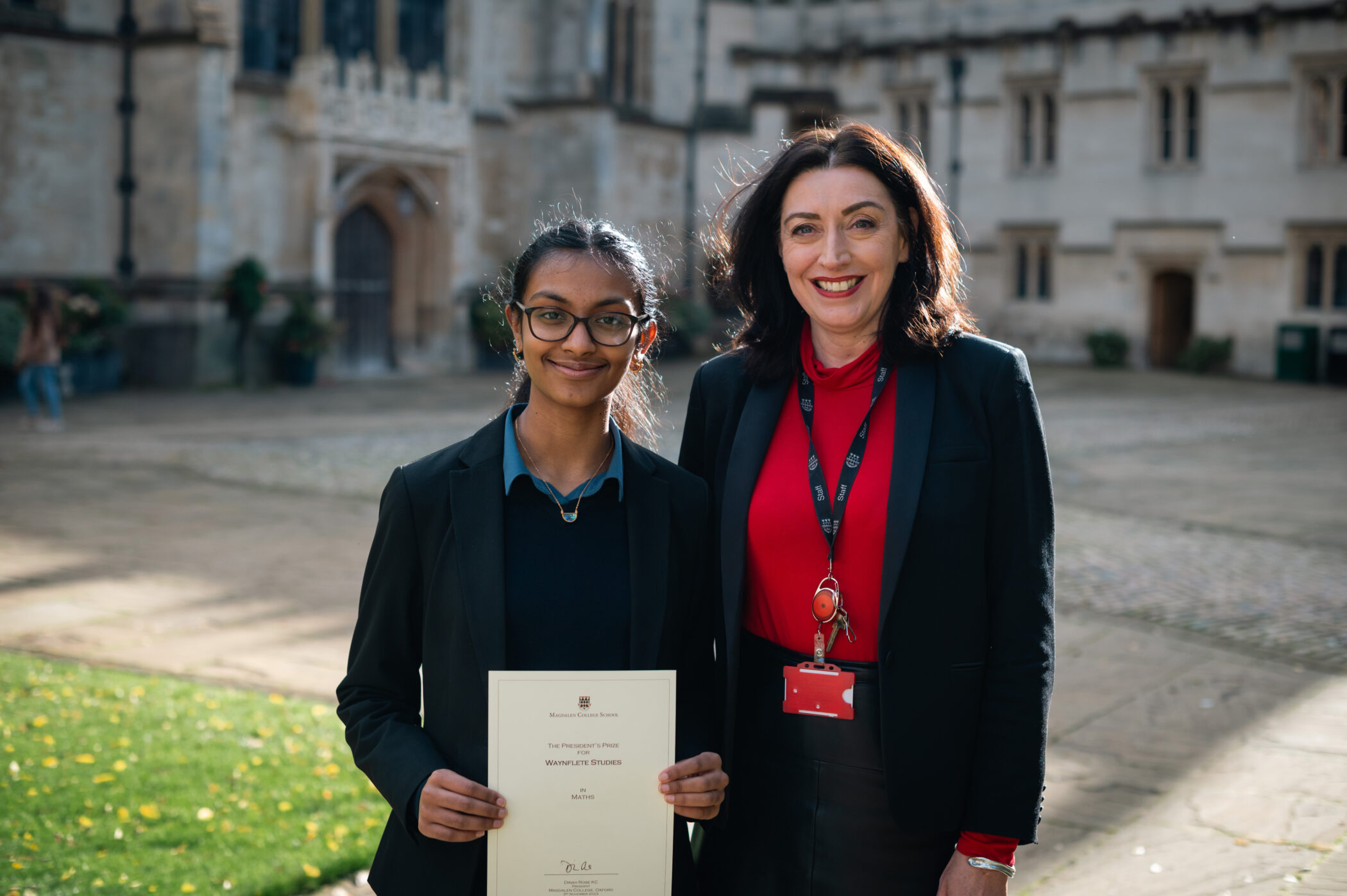A-level Mathematics
A-level Mathematics is highly valued by both universities and employers for the skills of reasoning, problem solving, logical argument and analytical thinking that it cultivates. Likewise, a Mathematics degree is becoming increasingly prized in the world of employment, and A-level Mathematics is a vital cornerstone of many other degree courses.
Pupils join the MCS Sixth Form with a wide range of mathematical qualifications and the system of Maths and Further Maths A-levels contains yet more variables. The MCS Maths Department has lots of experience dealing with these and firmly believes in tailoring the learning programme for the individual pupil. All courses are OCR MEI.
Broadly speaking there are three options. Please note that Further Maths requires Maths, making two A-levels overall.
- Maths A-level (sometimes called “Single” Maths)
- Maths A-level and Further Maths AS-level
- Maths A-level and Further Maths A-level
Which of these you choose will depend on the level of your mathematical ability, your enjoyment of the topics, as well as your plans for university. Those wishing to study Mathematics or courses with substantial mathematical content (eg Engineering, Physics etc) at top universities should take Further Maths. It is worth noting that completing just three A-Levels in Maths, Further Maths and one other subject is unlikely to be seen as a sufficiently broad curriculum, either by MCS or by universities.
At induction, incoming students for Maths and Further Maths will be given exercises to do and accompanying information. For a detailed explanation of course content and suggestions for further inspiration, please see below:
Single Maths
This is a direct progression from GCSE/IGCSE, and will take up one option block of four. To begin the course, you will almost certainly need to have a grade 8 or 9 at GCSE/IGCSE. If in doubt, please consult your teacher.
Students often find the step from GCSE to A-level quite challenging; most pupils’ experience is that the subject becomes harder, but at the same time a lot more interesting and rewarding.
Course content
The course consists of four main areas of study that will be developed across the two A-Level years:
- Mathematical processes
- Mathematical argument and language
- Problem solving and mathematical modelling
- Pure mathematics
- Proof
- Algebra
- Graphs
- Sequences
- Trigonometry
- Logarithms
- Calculus
- Vectors
- Mechanics
- Kinematics
- Motion under gravity
- Working with forces including friction
- Newton’s laws and simple moments
- Statistics
- Working with data from a sample to make inferences about a population
- Probability calculations
- Using binomial and Normal distributions as models
- Statistical hypothesis testing
Examination arrangements
This is a linear exam consisting of three 2-hour papers at the end of the course.
- Pure and Mechanics: 36.4% of the overall grade
- Pure and Statistics: 36.4% of the overall grade
- Pure and Comprehension: 27.2% of the grade
Further Maths
Further Mathematics is a separate A-level from Mathematics; it extends the core topics and introduces new material normally encountered during the first year of a degree course. It is therefore a particularly demanding A-level, although many find it even more exciting and rewarding than single Maths. Anyone considering applying to a top university to study a subject with substantial mathematical content would be well advised to give serious thought to taking this option; in recent years, a good number of the students taking Further Maths have gained Oxbridge places.
You will study Maths A-level in the Lower Sixth, with an exam sat in the Trinity Term of Upper Sixth. You will then study and sit Further Maths A-level (or AS-Level) in the Upper Sixth. In the Lower Sixth, you can either take A-level Maths over one or two blocks.
The two-block approach is open to all pupils and allows you to take Maths, Further Maths and two other subjects. The one-block approach is taught from the assumption that you have studied FSMQ (Additional Maths). It enables you to take Maths, Further Maths and three other subjects.
- If you have sat FSMQ then you can take the one block approach with no further work.
- If you have not studied FSMQ then you can still take the one block approach but will need to commit to an acceleration programme. This involves an extra two lessons per week throughout the year and some work in the summer before you start, which consists of: two half days of tuition in school before the start of the Michaelmas term and some self-study over the holidays, following a programme provided by the Maths Department. The Head of Maths is available by email to offer assistance throughout the summer.
- If you have studied Further Maths GCSE or another similar qualification then you may not have to complete the entire summer programme but would at least need to complete online tests confirming your mathematical knowledge in certain topics.
- Please note that Statistics GCSE or two separate Maths GCSEs (Methods and Applications) do not help with the content of A-Level, and are unlikely to count in this context.
Further Maths is a demanding course, and all those wishing to take it will have to demonstrate appropriate aptitude either in their Fifth Form at MCS or during their admissions interviews.
Is Further Maths right for me?
Further Maths is challenging, but extremely rewarding. If you have the potential and the interest, it is right for you. There can be some implications for choice of university course (especially for Medicine or Economics), and it is worth discussing this with one of the Sixth Form team or the Maths Department in advance. If you have any questions, please contact the Head of Maths, Mr Hearmon (ahearmon@mcsoxford.org) or the Deputy Head (Academic), Mr White (bwhite@mcsoxford.org).
In Lower Sixth, pupils study the Maths A-level course. This is examined at the end of U6.
All Further Mathematics is taught in the Upper Sixth; there is some compulsory content and some options (one major and one minor), which are outlined below.
Compulsory pure content
- Proof by induction is used in various contexts
- Complex numbers are introduced and lead to solutions of problems in algebra, geometry and trigonometry
- Matrices are used to solve systems of equations and to explore transformations
- Vector methods are applied to problems involving lines and planes
- Calculus techniques are extended, including the use of hyperbolic functions and polar coordinates, and culminate in the solution of differential equations
Options
We propose to offer:
- Mechanics Major with either Extra Pure Minor or Statistics Minor
- Statistics Major with either Extra Pure Minor or Mechanics Minor
although not all combinations may be possible in any particular year
Mechanics Major:
- Basic principles of forces and their moments
- Work and energy
- Impulse and momentum and centres of mass are used to model various situations, including: rigid bodies in equilibrium
- Particles moving under gravity, on a surface, in a circle, attached to springs
- Bodies colliding with direct or oblique impact
Statistics Major:
- Situations are modelled by discrete and continuous random variables; this allows inference about a population in the form of hypothesis testing and point and interval estimates of population parameters
- The suitability of models is tested; bivariate data are investigated and Bayes’ theorem used
- Simulation of random variables is introduced, a powerful way of tackling challenging problems
Mechanics Minor:
- Basic principles of forces and their moments
- Work and energy
- Impulse and momentum and centres of mass are used to model various situations, including:
- Rigid bodies in equilibrium
- Particles moving under gravity or on a surface
- Bodies colliding with direct impact
Statistics Minor:
- Situations are modelled by discrete random variables
- The suitability of models is tested using Chi-squared tests
- Bivariate data are investigated, with tests for correlation and association and modelling using regression
Extra Pure Minor:
- Sets and groups
- Recurrence relations
- Matrices and vectors
- Multivariable calculus
Examination arrangements
This is a linear course consisting of three written papers.
- Paper 1: 2hr40min on the compulsory core content. 50% of the overall grade
- Paper 2: 2hr15min on the major course. 1/3 of the overall grade
- Paper 3: 1hr15min on the minor course. 1/6 of the overall grade
Further Maths AS-level
Further Maths AS is also possible for those students who wish to study beyond A-Level but not complete the full A-level Further Maths course.
In U6 the course consists of Core Pure Maths, outlined below, and one of the Statistics or Mechanics major options outlined above.
Core content:
- The powerful technique of proof by induction is used in various contexts
- Complex numbers are introduced, including their geometrical representation
- Matrices are used to solve systems of equations and to explore transformations
- Scalar products of vectors are applied to problems involving planes.
Examination arrangements
This is a linear exam consisting of three papers, all of length 1 hour 15 minutes:
- Paper 1 on the compulsory core pure content,
- Paper 2 on the first part of the mechanics or statistics major option content,
- Paper 3 on the second part of the mechanics or statistics major option content.
| Further inspiration | ||
| Stewart, Ian | 17 Equations that Changed the World | |
| Professor Stewart’s Cabinet of Mathematical Curiosities | ||
| Singh, Simon | Fermat’s Last Theorem | |
| The Mathematics of the Simpsons | ||
| Bellos, Alex | Alex Through the Looking Glass | |
| Can You Solve My Problems? | ||
| Fry, Hannah | The Mathematics of Love | |
| Gardiner, Martin | [A wide variety to choose from] | Gardiner is a legend – his collections of problems are a classic and well-loved way to learn to have fun with Maths. |
| Pólya, George | How to Solve It | |
| Povey, Thomas | Professor Povey’s Perplexing Problems | |
| du Sautoy, Marcus | The Music of the Primes | |
| Chalkdust Magazine | Compiled by students and academics from a number of universities, this is a diverse publication covering research, humour, history and everything in between. | |
| Vsauce (youtube) | The Banach-Taski Paradox | Popular science channel, meant to be understandable by anyone. Several other Maths videos, but this is the most famous. |
| Numberphile (youtube) | Problems with Zero | |
| Root 2 | ||
| e | ||
| 1+2+3+4+…=-1/12 | ||
| Monty Hall Problem | ||
| Mathologer (youtube) | Root 2 and the deadly marching squares | A good example of a simple proof by contradiction. |
| Visualising Pythagoras | ||
| Times tables, Mandelbrot and the Heart of Mathematics | ||
| More or Less | Podcast | |
| Some articles | Pizza Holding a Curvature | |
| Mechanics Energy and Roller Coaster Loops | ||
 MCS ranks among the top independent secondary schools, and in 2024 was awarded Independent School of the Year for our contribution to social mobility.
MCS ranks among the top independent secondary schools, and in 2024 was awarded Independent School of the Year for our contribution to social mobility.

 28 of our pupils achieved 10 or more 8 or 9 grades in 2024.
28 of our pupils achieved 10 or more 8 or 9 grades in 2024.
 In 2023-24, MCS received over £448,000 in donated funds.
In 2023-24, MCS received over £448,000 in donated funds.

